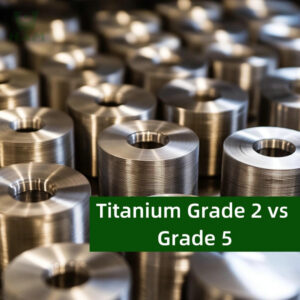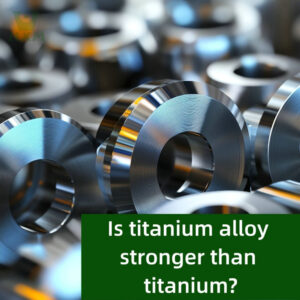
Hastelloy B-2, as an excellent nickel-based corrosion-resistant alloy, has occupied a pivotal position in the field of materials science with its unique composition, outstanding properties, and wide range of uses. Its unique combination allows it to exhibit excellent corrosion resistance and mechanical properties in various harsh environments, so it is favored by various industries. In this article, we will take an in-depth look at the composition of Hastelloy B-2, explore its unique properties, and detail its applications in multiple industrial fields. Through the explanation of this article, readers will have a more comprehensive, accurate, and professional understanding of Hastelloy B2.
Hastelloy B-2 - 1. Composition:
The composition of Hastelloy B-2 has been carefully formulated to offer excellent corrosion resistance and mechanical properties. Its key elements include:
- Nickel (Ni): This is the primary constituent of the alloy, providing good ductility and corrosion resistance.
- Chromium (Cr): Enhances the corrosion resistance of the alloy in oxidizing environments, particularly against sulfuric and hydrochloric acids.
- Molybdenum (Mo): Increases the corrosion resistance of the alloy in reducing environments and enhances its resistance to hydrofluoric acid.
- Iron (Fe): As a primary alloying element, iron improves the mechanical strength of the alloy.
- Cobalt (Co): Enhances the corrosion resistance and high-temperature performance of the alloy by improving its solid solution strengthening effect.
- Tungsten (W): Further improves the corrosion resistance of the alloy, especially in oxygen- and sulfur-containing corrosive media.
- Minor elements such as Carbon (C), Silicon (Si), and Manganese (Mn): These elements are primarily used to adjust the mechanical properties and processability of the alloy.

Hastelloy C-276 belongs to nickel-molybdenum-chromium-iron-tungsten nickel-based alloy, which is one of the most corrosion-resistant modern metal materials.

Hastelloy X is a nickel-based superalloy known for its exceptional high-temperature strength and oxidation resistance.
Hastelloy B-2 - 2. Properties:
Hastelloy B-2 exhibits a range of exceptional properties that distinguish it among various applications:
- Excellent corrosion resistance: The B-2 alloy demonstrates good resistance to various corrosive media, including hydrochloric acid, sulfuric acid, phosphoric acid, acetic acid, and formic acid. Additionally, it can withstand pitting, crevice corrosion, and stress corrosion cracking.
- High strength: The high strength of the alloy makes it suitable for applications involving high loads and pressures.
- Good processability: The B-2 alloy can be processed and formed using various traditional methods such as casting, forging, rolling, and welding.
- Excellent thermal stability: The alloy maintains good mechanical properties and corrosion resistance even at elevated temperatures.
- Good weldability: The B-2 alloy is easy to weld, and the welded joints exhibit excellent corrosion resistance and mechanical properties.

Hastelloy C-276 belongs to nickel-molybdenum-chromium-iron-tungsten nickel-based alloy, which is one of the most corrosion-resistant modern metal materials.

Hastelloy X is a nickel-based superalloy known for its exceptional high-temperature strength and oxidation resistance.
Hastelloy B-2 - 3. Uses:
Due to its unique properties and wide range of applications, Hastelloy B-2 is used in multiple industries:
- Chemical processing industry: In the chemical processing industry, B2 alloy is commonly used to manufacture reactors, storage tanks, pipelines, and valves to withstand the effects of various corrosive media.
- Oil and gas industry: In the oil and gas exploration, processing, and transportation processes, B2 alloy is widely used for wellhead equipment, submarine pipelines, and refining equipment due to its excellent corrosion resistance and high strength.
- Environmental protection and wastewater treatment: In the field of environmental protection and wastewater treatment, B-2 alloy can be used to manufacture treatment equipment and pipelines to resist the erosion of chemical wastewater and other corrosive media.
- Power industry: In the power industry, B2 alloy is used to manufacture flue gas desulfurization equipment, flue gas reheaters, and chimneys to withstand the challenges of high temperatures and corrosive environments.
- Marine engineering: B-2 alloy is widely used in marine engineering applications such as offshore platforms, submarine cables, and ships due to its good corrosion resistance and high strength.
- In addition, Hastelloy B-2 can also be used in the pharmaceutical, food, and beverage processing, and nuclear energy industries to meet various complex corrosion resistance and mechanical performance requirements.
Why Choose Huaxiao Alloy?
In summary, Hastelloy B-2 has been widely used in multiple industrial fields due to its unique composition and properties. Its excellent corrosion resistance, high strength, and good processability make it ideal for many critical components and equipment.
Thank you for reading our article and we hope it can help you to have a better understanding of the composition, properties, and uses of Hastelloy B-2. If you are looking for Hastelloy B-2 suppliers online now, please don’t hesitate to contact Huaxiao Alloy.
As a leading supplier of Hastelloy products from China, Huaxiao Alloy provides our customers with high-quality Hastelloy B-2 Alloy, Hastelloy S Alloy, Inconel Alloy 600, Inconel Alloy 601, Inconel 625 UNS N06625, Monel K500 and Monel 400, Hastelloy B3 (UNS N10675), Hastelloy D205, Hastelloy G30 (UNS N06030), Hastelloy C-2000, Hastelloy B2, Hastelloy X alloy, Hastelloy C4, Hastelloy C-276, and Hastelloy C22.

Hastelloy C-276 belongs to nickel-molybdenum-chromium-iron-tungsten nickel-based alloy, which is one of the most corrosion-resistant modern metal materials.

Hastelloy X is a nickel-based superalloy known for its exceptional high-temperature strength and oxidation resistance.
Hastelloy B2 is a nickel-based alloy primarily composed of the following elements:
- Nickel (Ni): 60-70% – The base element that provides overall corrosion resistance and mechanical properties.
- Molybdenum (Mo): 28-30% – This is the key element that imparts resistance to reducing acids like hydrochloric acid, making the alloy particularly resistant to pitting and crevice corrosion.
- Iron (Fe): 2-5% – Small amounts of iron are added for strengthening the alloy but are kept low to avoid compromising corrosion resistance.
- Chromium (Cr): 0.1% (maximum) – Very low chromium content is maintained, which helps reduce susceptibility to oxidation.
- Other elements: Includes trace amounts of manganese (Mn), silicon (Si), carbon (C), and phosphorus (P), but these are present in very small quantities to ensure specific material properties.
This composition makes Hastelloy B2 ideal for environments involving strong hydrochloric acid and other reducing environments, where high corrosion resistance is required.
“B2” refers to Hastelloy B2, a type of corrosion-resistant nickel-molybdenum alloy, designed specifically for high-performance applications in corrosive environments. The “B” designation is used for alloys in the Hastelloy family that have high molybdenum content, which enhances their resistance to reducing acids, particularly hydrochloric acid. Hastelloy B2 is primarily used in the chemical processing, petrochemical, and power generation industries due to its excellent resistance to aggressive chemicals, including hydrogen chloride and sulfuric acid.
While both Hastelloy B2 and B3 are designed for similar applications, the following key differences distinguish them:
- Composition: Hastelloy B3 is an improved version of B2, with modifications in its composition. It has a lower iron content and higher carbon content than B2, which enhances its resistance to oxidation and stress corrosion cracking.
- Corrosion Resistance: B3 offers better resistance to high-temperature oxidation and is more stable in the presence of oxidizing acids compared to B2, which is more suited to reducing acids like hydrochloric acid.
- Mechanical Properties: B3 is more weldable than B2 and exhibits superior mechanical strength at high temperatures.
- Weldability: Hastelloy B3 has improved weldability and is less susceptible to the formation of harmful phases that can arise during welding compared to B2.
- Applications: While both materials are used in chemical processing, B3 is preferred in applications involving higher temperatures and oxidizing environments.
Hastelloy B2 has several equivalent materials in other alloy families, although it is often preferred in highly corrosive environments like hydrochloric acid handling. Some equivalent materials include:
- Monel 400: A nickel-copper alloy that can be used in similar environments but has lower resistance to hydrochloric acid compared to Hastelloy B2.
- Incoloy 800: A nickel-iron-chromium alloy, which may be used in high-temperature environments, though it has less resistance to reducing acids than Hastelloy B2.
- Alloy 20: Also a nickel-based alloy with excellent resistance to sulfuric acid, but Hastelloy B2 offers superior performance in reducing environments.
- C-276 (Hastelloy C-276): While not identical, C-276 is another high-performance nickel alloy known for excellent corrosion resistance in a wide range of acids. However, B2 performs better in certain reducing environments, particularly hydrochloric acid.
The differences between Hastelloy B2 and B3 can be summarized as follows:
- Corrosion Resistance: Hastelloy B2 excels in environments with reducing acids (e.g., hydrochloric acid), while B3 offers improved resistance in both reducing and slightly oxidizing conditions.
- Weldability: Hastelloy B3 has better weldability compared to B2, thanks to its higher carbon content, which reduces the risk of forming detrimental phases during welding.
- Temperature Resistance: B3 is better suited for high-temperature applications and offers improved oxidation resistance at elevated temperatures compared to B2.
- Mechanical Properties: B3 provides better mechanical strength and stress resistance at high temperatures, making it suitable for more demanding applications.
- Cost and Availability: B2 is generally cheaper and is often used for less demanding applications where maximum temperature resistance and oxidation resistance are not critical.
Hastelloy B3 is a corrosion-resistant, nickel-molybdenum alloy known for the following key properties:
- Corrosion Resistance: Superior to many other alloys in reducing acids such as hydrochloric acid, sulfuric acid, and hydrochloric acid-sulfuric acid mixtures. It also offers enhanced resistance to pitting, stress corrosion cracking, and crevice corrosion in aggressive environments.
- Oxidation Resistance: Improved compared to Hastelloy B2, particularly at high temperatures and in oxidizing environments.
- Mechanical Strength: B3 maintains strong mechanical properties even at elevated temperatures, offering good strength and ductility.
- Weldability: Excellent weldability with minimal risk of cracking, making it suitable for applications that involve complex shapes or require welding.
- Temperature Resistance: B3 can withstand higher temperatures compared to B2, making it better suited for applications where both corrosion resistance and high-temperature performance are needed.
- Formability: It is easier to form compared to B2, allowing it to be used in a wider range of fabrication processes.









